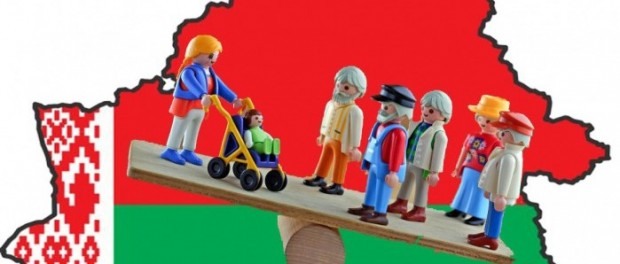Demographers sound the alarm

This was stated by the deputy head of the Department of Population Affairs, Gender and Family Policy of the Ministry of Labour and Social Protection Marina Artemenko at the press-conference in Minsk.
She described the demographic situation in Belarus as generally positive. According to the statistics along with the increase in the birth rate there is also a reduction in mortality. In 2005 there were born 119 028 children, which is the highest figure in the history of sovereign Belarus. During this year the growth continued as well: the first quarter saw the birth if 29 052 children, which is 4.5% higher than in the same period of 2015.
The Ministry representative attributes the birth rate growth, among other things, to the state support of families. According to Marina Artemenko recent years saw the adoption of particularly important measures: increase in childcare allowance, introduction of additional types of material support for families, development of social care system. Nowadays only few countries (Russia, Kazakhstan, Ukraine) provide for such a long maternity leave — up to three years — and some of them don’t cover the whole period with payments.
The official reminded us that 11 kinds of allowances are granted in Belarus for birth and upbringing of children. Today more than 540 000 children or 30% of total receive these allowances. The most significant of them is maternity benefit, which amounts now 10 minimum subsistence budgets at birth of the first child (nearly 17 million rubles) and 14 minimum subsistence budgets (almost 24 million rubles) for the second and subsequent children.
The support of large families has been strengthened with the introduction of the ‘Family Capital’ programme. The programme is designed for 5 years — from January 1, 2015 to December 31, 2019. As of May 1, 2016 there were opened 17 760 ‘Family Capital’ deposit accounts in JSC ‘Belarusbank SSB’, totaling more than 117 million dollars.
The official stated that yet the birth rate in Belarus didn’t balance the mortality rate and the natural population decline is maintained. The Belarusian population is ageing. The demographic situation will put health care system under pressure. Furthermore, the number of women of reproductive age is decreasing. ‘This issue is of great concern when we consider the replenishment of labour force,’ Marina Artemenko admitted.
Experts believe that despite the variety of instruments for support of families with children the birth rate increase in Belarus is of a purely demographic character and such tendency won’t maintain for long.
‘Such instruments as ‘Family Capital’ didn’t attribute to the growth of birth rate in Belarus at all,’ senior associate of Economic Research Center BEROC Katerina Bornukova is convinced, ‘The reason is that there still are a lot of women of reproductive age in the demographic structure. This period of time will pass and then the birth rate will fall again. Therefore, the burden on the able-bodied population will grow even faster than it does today and frankly speaking no improvements on that score await for us in the future.’
In spite of the retirement age raising the number of pensionaries will continue to grow. Consequently, much depends upon the financial sustainability of Belarusian pension system.
‘The future will see great social changes. Also a very serious challenge to public health is the ageing of population. There are different ways out of the problem, but chances are that in a five-year term the government once again will have to consider raising of the retirement age. Besides, if the country will experience lack of labour force, one should try to attract migrants so that workers from different countries came to Belarus and, of course, domestic specialists didn’t leave the country. The majority of our youth go into higher or vocational education after school and thus we are able to cover our own requirement of highly skilled workforce. One should attract unskilled workers, which is not that hard to do as it may seem,’ the expert reckons.

Leave a comment